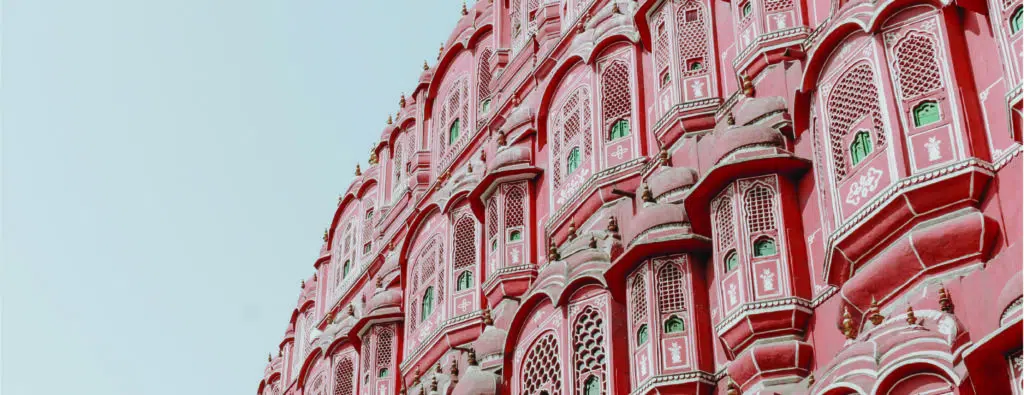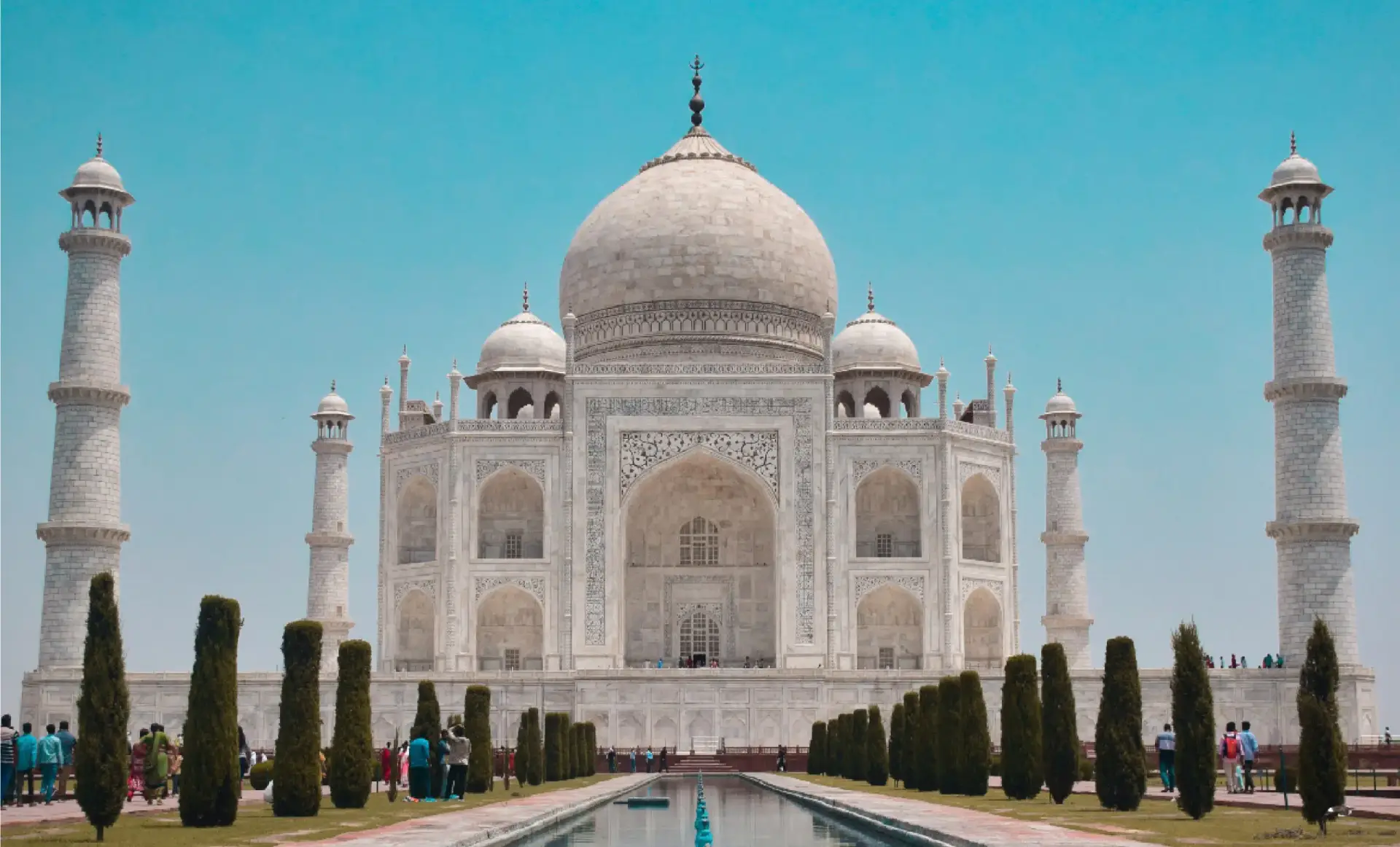 India has the sixth largest number of UNESCO World Heritage sites in the world. While celebrated as one of the lands where civilization reached its first extraordinary heights, the last millennium has seen India adorned by a profusion of crowning architectural masterpieces.
India has the sixth largest number of UNESCO World Heritage sites in the world. While celebrated as one of the lands where civilization reached its first extraordinary heights, the last millennium has seen India adorned by a profusion of crowning architectural masterpieces.
Nomadic Expeditions invites you to experience India in all its glory. From the world-renowned Taj Mahal to the engineering feats of the Mountain Railways of India to the colorful “Pink City” of Jaipur with its storybook gardens, courtyards, and palaces—there are exquisite marvels almost everywhere you turn in this rich subcontinent—as this list spanning the last one-thousand years shows.
Taj
The Taj Mahal, and immense mausoleum of white marble, was built in Agra between 1631 and 1648 by order of the Mughal emperor Shah Jahan in memory of his favorite wife. The Taj Mahal is the jewel of Muslim art in India and one of the universally admired masterpieces of the world’s heritage. It encompasses the mosque, the guest house and the main gateway on the south, the outer courtyard and its cloisters. For its construction, masons, stone-cutters, inlayers, carvers, painters, calligraphers, dome builders and other artisans were requisitioned from the whole of the empire and also from the Central Asia and Iran. Ustad-Ahmad Lahori was the main architect of the Taj Mahal. The four free-standing minarets at the corners of the platform added a hitherto unknown dimension to the Mughal architecture. The four minarets provide not only a kind of spatial reference to the monument but also give a three dimensional effect to the edifice. The primary building material of the mosque is brick-in-lime mortar veneered with red sandstone and marble and inlay work of precious and semi-precious stones.
Churches and Convents of Goa
The churches and convents of Goa, the former capital of the Portuguese Indies, illustrate the evangelization of Asia. These monuments were influential in spreading forms of Manueline, Mannerist and Baroque art in all the countries of Asia where missions were established. These seven monuments exerted great influence in the 16th to 18th centuries on the development of architecture, sculpture, and painting throughout the countries of Asia where Catholic missions were established. In doing so they eminently illustrated the work of missionaries in Asia. The architectural styles followed those in vogue in Europe during the contemporary period, but were adapted to suit the native conditions through the use of local materials and artefacts.
Fatehpur Sikri
Fatehpur Sikri was constructed southeast of an artificial lake on the slopping levels of the outcrops of the Vindhyan hill ranges. Known as the “City of Victory”, it was made capital by the Mughal emperor Akbar and constructed between 1571 and 1573 AD. It was the first planned city of the Mughals to be marked by magnificent administrative, residential, and religious buildings comprised of palaces, public buildings, mosques, and living areas for the court, the army, the servants of the king and an entire city.
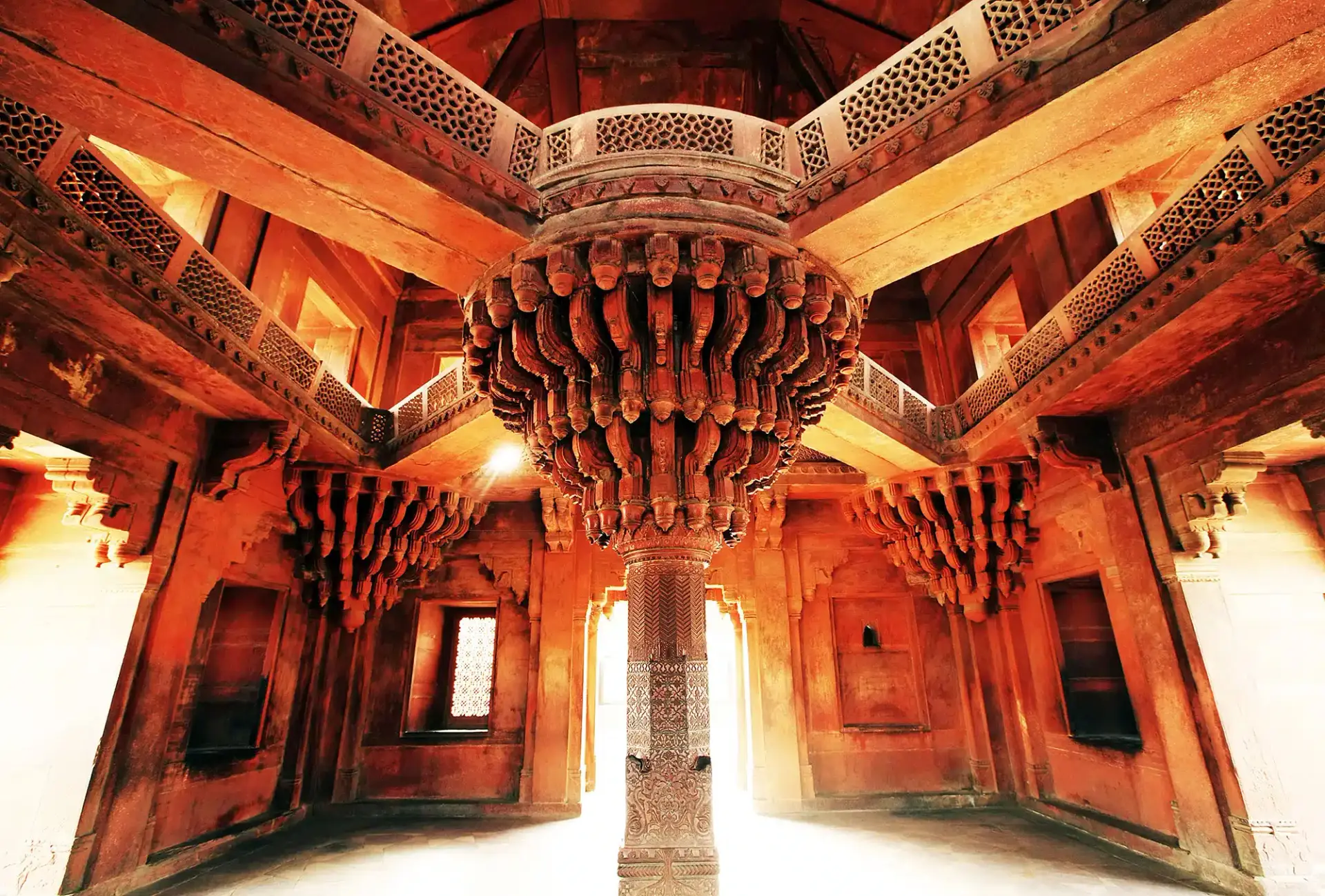
Humayun’s Tomb, Delhi
Built in 1570, Humayun’s Tomb is the first of the grand dynastic mausoleums that were to become synonyms of Mughal architecture with the architectural style reaching its zenith years later with the Taj Mahal. Humayun’s Tomb stands within a complex that includes other Mughal garden-tombs such as Nila Gumbad, Isa Khan, Bu Halima, Afsarwala, Barber’s Tomb and the complex where the craftsmen employed for the Building of Humayun’s Tomb stayed, the Arab Serai.
Agra
Near the gardens of the Taj Mahal stands the important 16th-century Mughal monument known as the Red Fort of Agra. This powerful fortress of red sandstone encompasses, within its 2.5-km-long enclosure walls, the imperial city of the Mughal rulers. It comprises many fairy-tale palaces, such as the Jahangir Palace and the Khas Mahal, built by Shah Jahan; audience halls, such as the Diwan-i-Khas; and two very beautiful mosques.
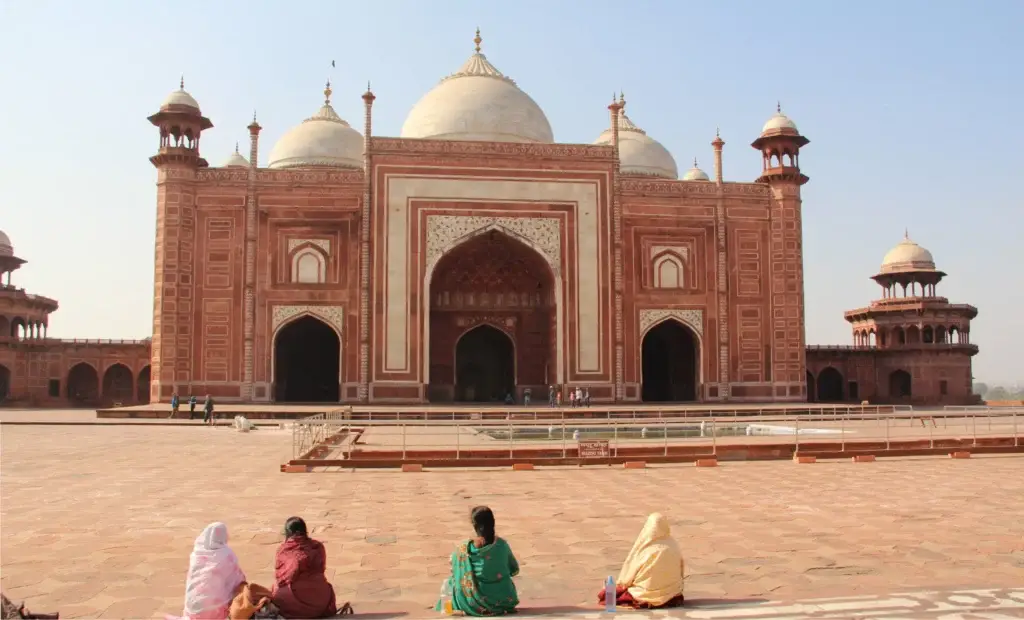
Qutb Minar and its Monuments, Delhi
The ensemble of mosques, minars, and other structures in the Qutb Minar complex is an outstanding testimony to the architectural and artistic achievements of Islamic rulers after they first established their power in the Indian subcontinent in the 12th century. The complex, located at the southern fringe of New Delhi, illustrates the new rulers’ aspiration to transform India from Dar-al-Harb to Dar-al-Islam with the introduction of distinctive building types and forms.
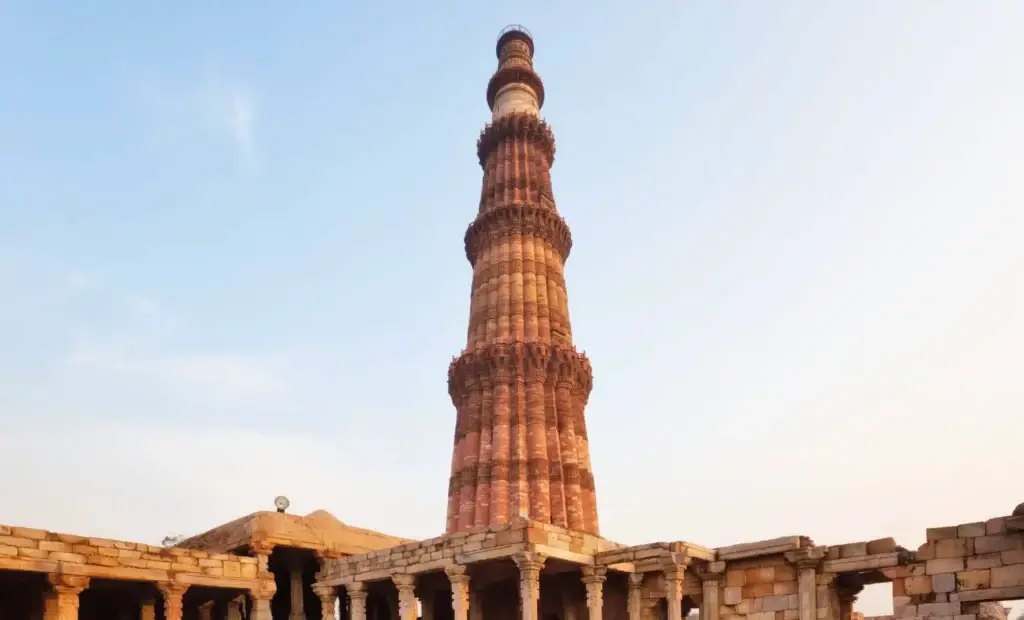
Mountain Railways of India
The Mountain Railway of India consists of three railways: the Darjeeling Himalayan Railway located in the foothills of the Himalaya in West Bengal, the Nilgiri Mountain Railways located in the Nilgiri Hills of Tamil Nadu, and the Kalka Shimla Railway located in the Himalayan foothills of Himachal Pradesh. All three railways are still fully functional and operational. Representing visionary feats of engineering, these railways are outstanding examples of innovative transportation systems built through difficult terrain, which had great influence on the social and economic development of their respective regions.
Chhatrapati Shivaji Terminus
Located in Mumbai, the Chhatrapati Shivaji Terminus is an outstanding example of Victorian Gothic Revival architecture in India, blended with themes deriving from Indian traditional architecture. The building, designed by the British architect F. W. Stevens, became the symbol of Bombay as the “Gothic City” and the major international mercantile port of India. The terminal was built over 10 years, starting in 1878, according to a High Victorian Gothic design based on late medieval Italian models. Its remarkable stone dome, turrets, pointed arches and eccentric ground plan are close to traditional Indian palace architecture. It is an outstanding example of the meeting of two cultures, as British architects worked with Indian craftsmen to include Indian architectural tradition and idioms thus forging a new style unique to Bombay.
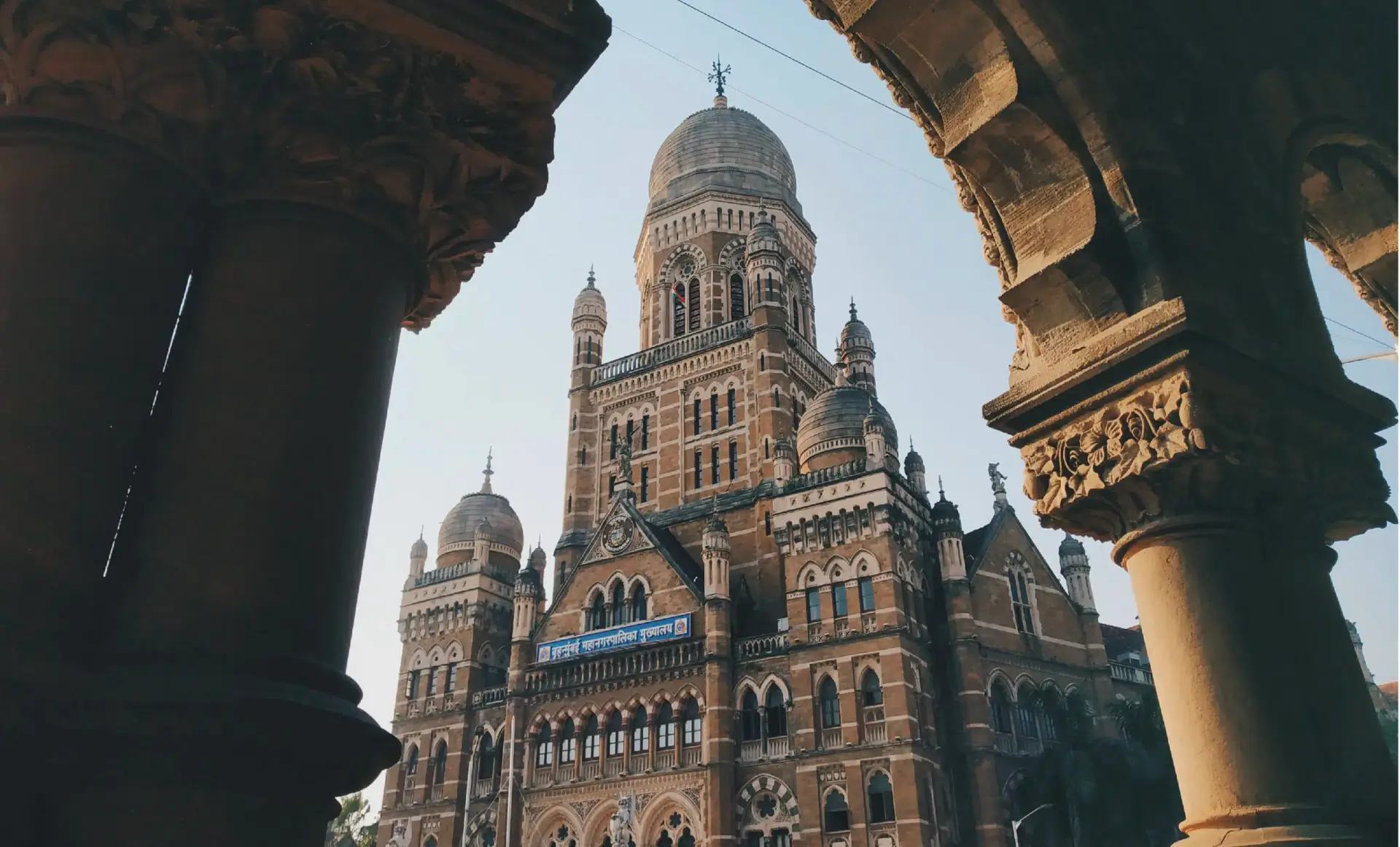
Champaner-Pavagadh Archaeological Park
Champaner-Pavagadh Archaeological Park is a concentration of largely unexcavated archaeological, historic and living cultural heritage properties. Cradled in an impressive landscape which includes prehistoric (chalcolithic) sites, it entails the hill fortress of an early Hindu capital, and the remains of the 16th-century capital of the state of Gujarat. The site also includes, among other vestiges, fortifications, palaces, religious buildings, residential precincts, agricultural structures and water installations, from the 8th to 14th centuries. The Kalikamata Temple on top of Pavagadh Hill is considered to be an important shrine, attracting large numbers of pilgrims throughout the year. The site is the only complete and unchanged Islamic pre-Mughal city.
Red Fort Complex
The Red Fort Complex was built as the palace fort of Shahjahanabad, the new capital of the fifth Mughal Emperor of India, Shah Jahan. Named for its massive enclosing walls of red sandstone, it is adjacent to an older fort, the Salimgarh, built by Islam Shah Suri in 1546, with which it forms the Red Fort Complex. The Red Fort is considered to represent the zenith of Mughal creativity. The planning of the palace is based on Islamic prototypes, but each pavilion reveals architectural elements typical of Mughal building, reflecting a fusion of Persian, Timurid and Hindu traditions The Red Fort’s innovative planning and architectural style, including the garden design, strongly influenced later buildings and gardens in Rajasthan, Delhi, Agra and further afield.
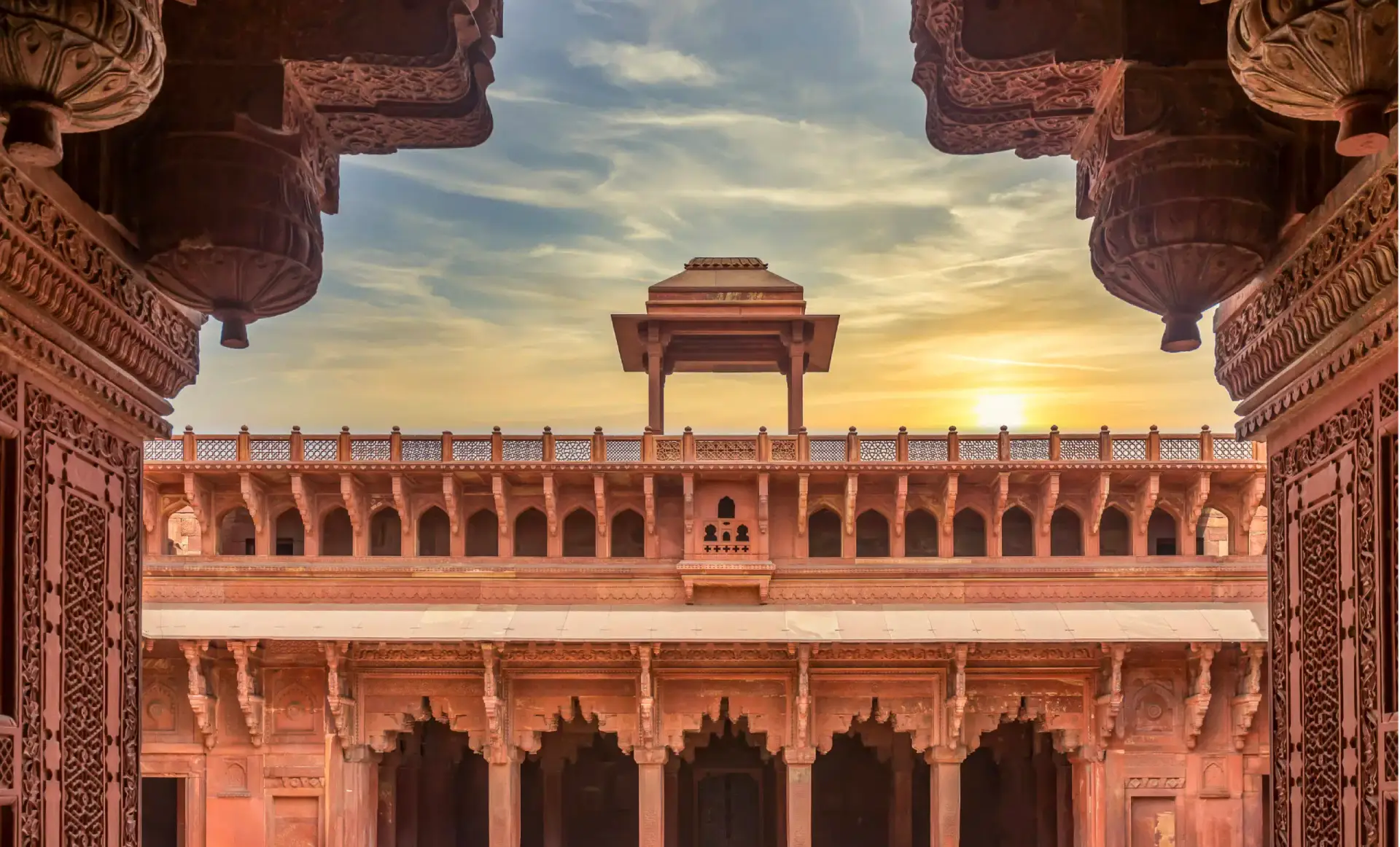
The Jantar Mantar, Jaipur
The Jantar Mantar, in Jaipur, is an astronomical observation site built in the early 18th century. It includes a set of some 20 main fixed instruments. They are monumental examples in masonry of known instruments but which in many cases have specific characteristics of their own. Designed for the observation of astronomical positions with the naked eye, they embody several architectural and instrumental innovations. This is the most significant, most comprehensive, and the best preserved of India’s historic observatories. It is an expression of the astronomical skills and cosmological concepts of the court of a scholarly prince at the end of the Mughal period.
Historic City of Ahmadabad
The walled city of Ahmadabad was founded by Sultan Ahmad Shah in 1411 AD on the eastern bank of the Sabarmati River. It continued to flourish as the capital of the State of Gujarat for six centuries. It presents a rich architectural heritage from the sultanate period, notably the Bhadra citadel, the walls and gates of the Fort city and numerous mosques and tombs as well as important Hindu and Jain temples of later periods. The urban fabric is made up of densely-packed traditional houses (pols) in gated traditional streets (puras) with characteristic features such as bird feeders, public wells and religious institutions. The city continued to flourish as the capital of the State of Gujarat for six centuries, up to the present.
Sun Temple
On the shores of the Bay of Bengal, bathed in the rays of the rising sun, the temple at Konarak is a monumental representation of the sun god Surya’s chariot. Its 24 wheels are decorated with symbolic designs and it is led by a team of six horses. Built in the 13th century, it is one of India’s most famous Brahman sanctuaries. Konârak’s location and name are important testimonies to all the above associations, and its architectural realisation is associated with the living traditions of Brahmanismand tantricpractices.
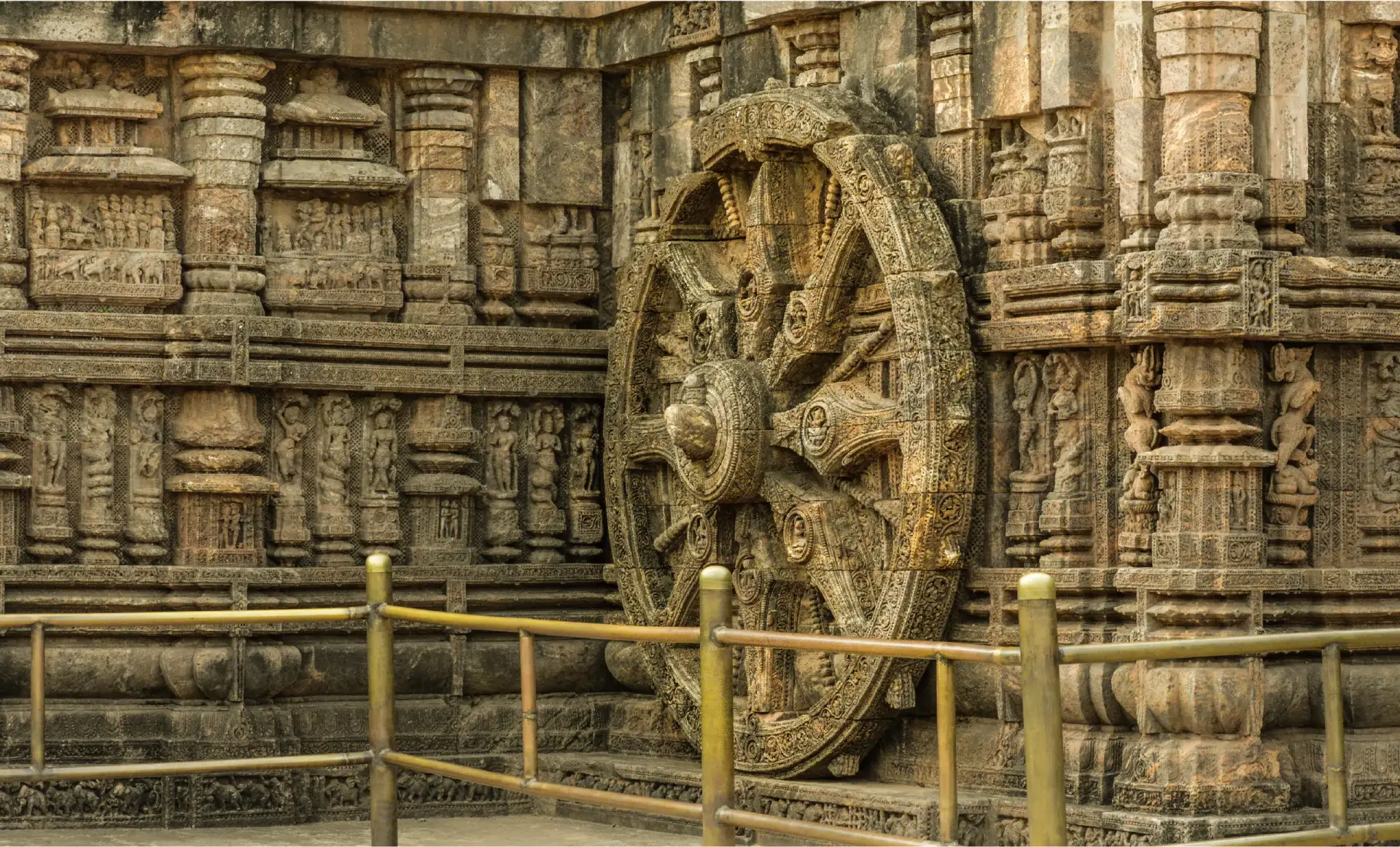
Victorian Gothic and Art Deco Ensembles of Mumbai
Having become a global trading center, the city of Mumbai implemented an ambitious urban planning project in the second half of the 19th century. It led to the construction of ensembles of public buildings bordering the Oval Maidan open space, first in the Victorian Neo-Gothic style and then, in the early 20th century, in the Art Deco idiom. The Victorian ensemble includes Indian elements suited to the climate, including balconies and verandas. The Art Deco edifices, with their cinemas and residential buildings, blend Indian design with Art Deco imagery, creating a unique style that has been described as Indo-Deco.
Jaipur City, Rajasthan
The “Pink City” of Jaipur in India’s northwestern state of Rajasthan features numerous colorful buildings made of sandstone washed in pink and soft red hues. In a remarkable difference from the existing medieval practices where settlements developed in a more organic manner, the City of Jaipur is an exceptional example of indigenous city planning and construction in South Asia. Jaipur was founded in 1727 by Sawai Jai Singh II, and its streets feature continuous colonnaded businesses that intersect in the center, creating large public squares called chaupars. Markets, shops, residences and temples built along the main streets have uniform facades. Besides an exemplary planning, its iconic monuments such as the Govind Dev temple, City Palace, Jantar Mantar and Hawa Mahal excel in artistic and architectural craftsmanship of the period.
Kakatiya Rudreshwara (Ramappa) Temple, Telangana
Rudreshwara, popularly known as Ramappa Temple, is the main Shiva temple in a walled complex built during the Kakatiyan period. Construction of the sandstone temple began in 1213 CE and is believed to have continued over some 40 years. The building features decorated beams and pillars of carved granite and dolerite with a distinctive and pyramidal Vimana (horizontally stepped tower) made of lightweight porous bricks, so-called “floating bricks,” which reduced the weight of the roof structures. The temple’s sculptures of high artistic quality illustrate regional dance customs and Kakatiyan culture. Located at the foothills of a forested area, the choice of setting for the edifice followed the ideology and practice sanctioned in dharmic texts that temples are to be constructed to form an integral part of a natural setting, including hills, forests, springs, streams, lakes, catchment areas, and agricultural lands.

